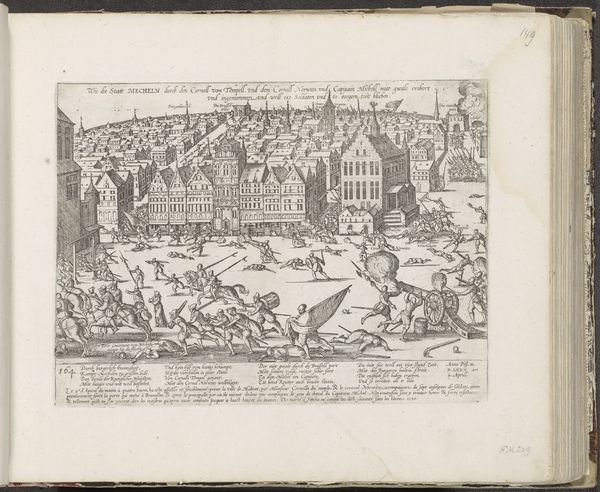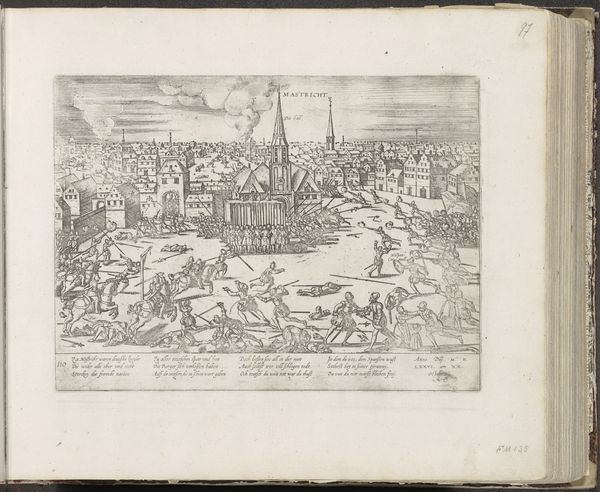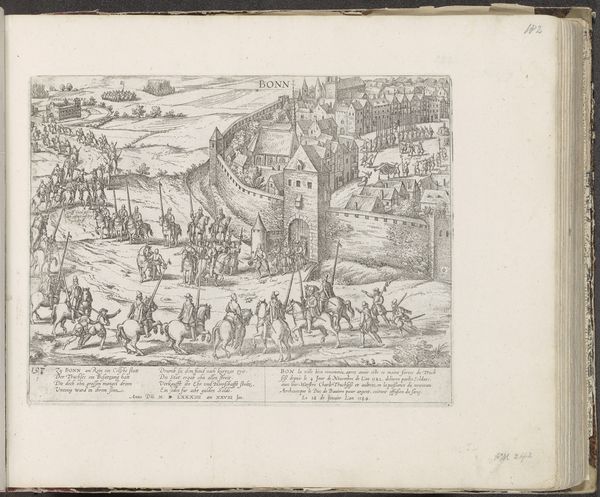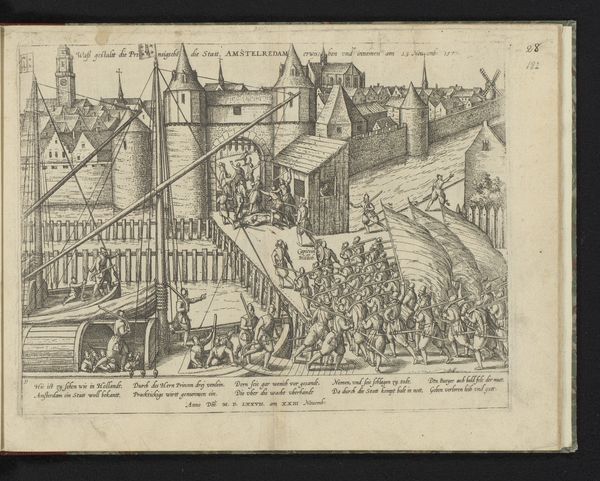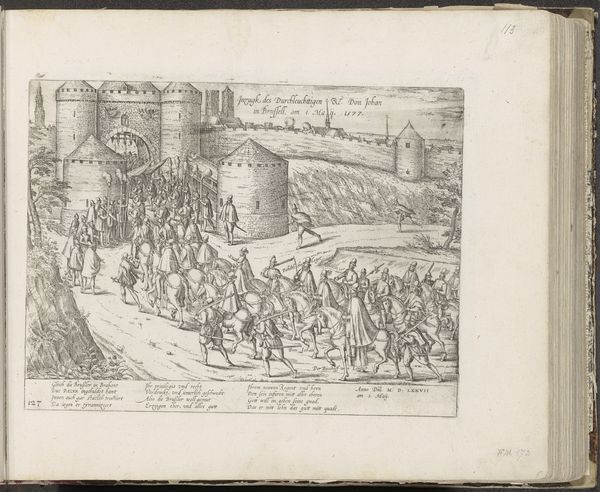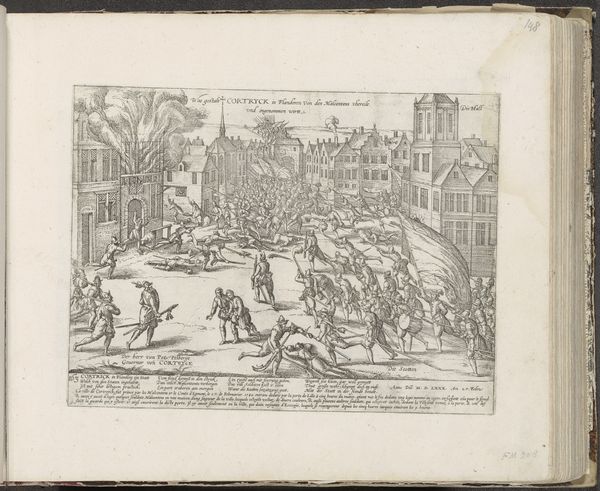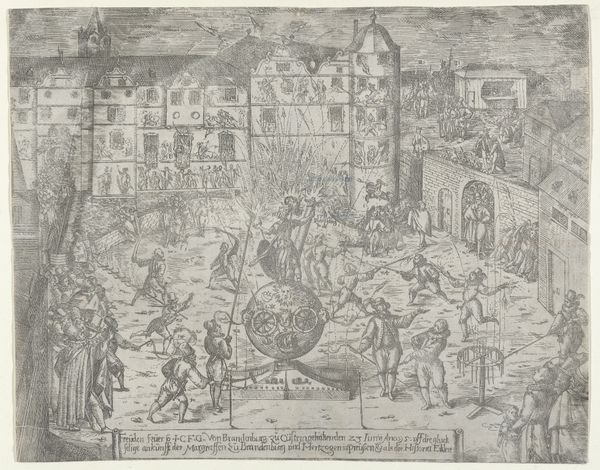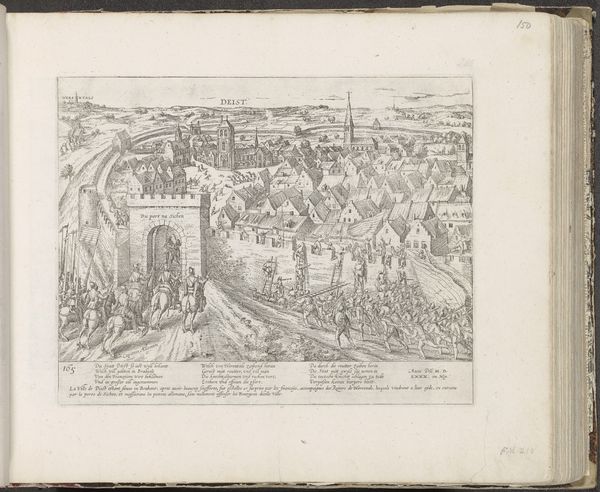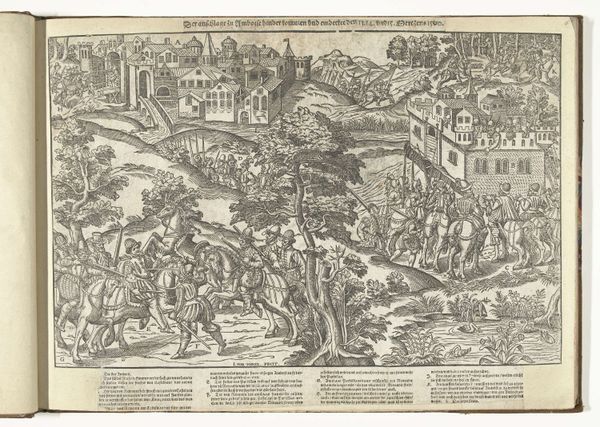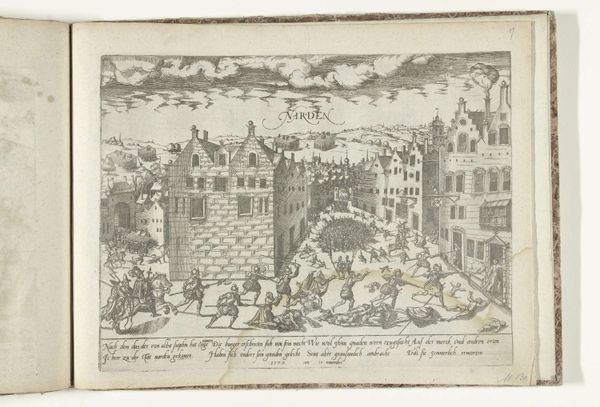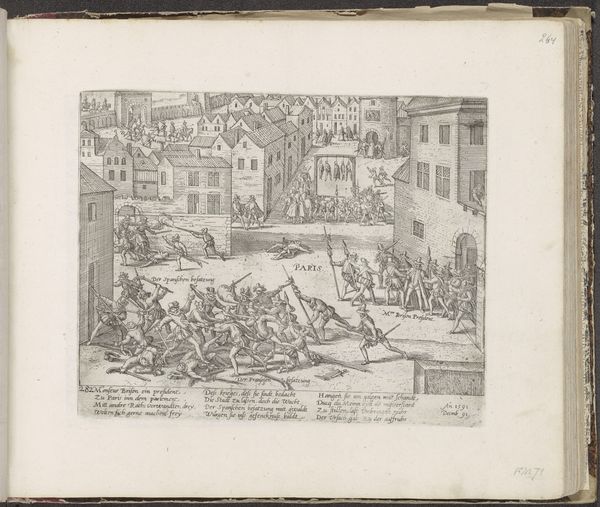
print, engraving
# print
#
landscape
#
cityscape
#
genre-painting
#
history-painting
#
northern-renaissance
#
engraving
Dimensions: height 214 mm, width 286 mm
Copyright: Rijks Museum: Open Domain
Curator: Here we have Frans Hogenberg's "Moord door de Spanjaarden te Naarden, 1572," an engraving now residing in the Rijksmuseum. The print is dated between 1572 and 1574. Editor: The stark black and white contrasts give this image such a violent energy. The chaotic sprawl of bodies really emphasizes the massacre; there's nothing romantic here. Curator: Indeed. The work's power lies in its objective, almost reportorial style, typical of Northern Renaissance printmaking. The detailed city, engulfed in conflict, showcases a keen understanding of perspective and spatial organization. Consider the receding planes, how they guide our eye through the carnage. Editor: But this isn't just about formal arrangement, is it? This work is a historical record, documenting Spanish atrocities in the Netherlands. It speaks to issues of colonization, religious persecution, and the devastating human cost of war. The visual language works to invoke moral outrage and empathy. Curator: Perhaps. However, I find it more compelling to analyze how Hogenberg balances the panoramic view with intricate details of individual struggles. The composition cleverly juxtaposes architectural stability with human disarray. Editor: It's difficult to separate the visual presentation from the historical reality. It makes me question the very act of observation – who are we as viewers of this historical pain, centuries later? It also highlights how such imagery can be weaponized for political ends, like fueling nationalist sentiments. Curator: Those contextual dimensions are certainly pertinent. Nevertheless, it’s the print’s formal resolution – its ability to synthesize information within a tight composition and to manipulate light and dark to lead the viewer's eye – that remains central to its enduring impact as a work of art. Editor: For me, it's the unsettling feeling this artwork creates, reminding us of the cyclical nature of violence, its roots in both grand ideological conflicts and mundane acts of cruelty. Curator: A compelling observation – and an appropriately sober note upon which to conclude our analysis.
Comments
No comments
Be the first to comment and join the conversation on the ultimate creative platform.
